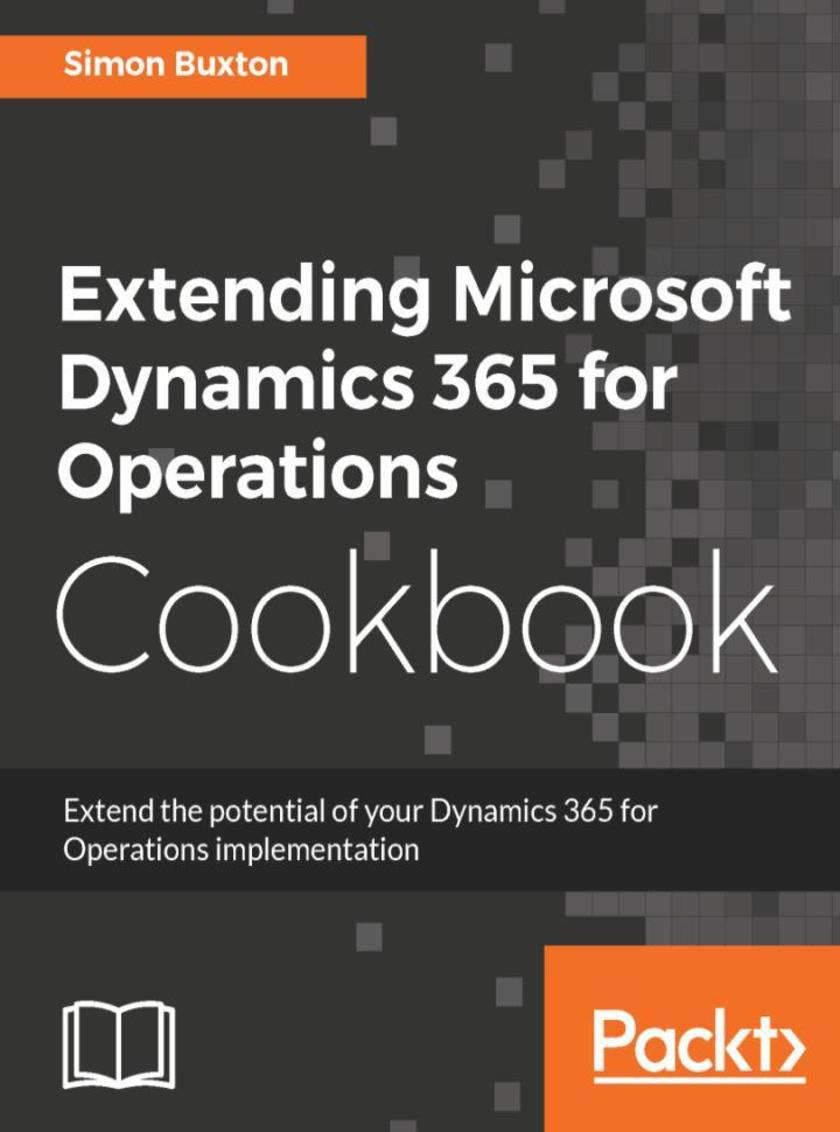
Extending Microsoft Dynamics 365 for Operations Cookbook
¥99.18
Have the best tools at your fingertips to extend and maximize the efficiency of your business management About This Book ? Follow practical and easy-to-grasp examples, illustrations and coding to make the most out of Dynamics 365 for Operations in your business scenario ? Extend Dynamics 365 for Operations in a cost-effective manner by using tools you already have ? Solve common business problems with the valuable features of Dynamics 365 for Operations Who This Book Is For This book is for those who are getting to grips with Dynamics 365 for Operations developers or those migrating from C# development. The guide includes information essential for new and experienced Dynamics 365 for Operations developers. What You Will Learn ? Create enumerated and extended data types ? Understand the importance of using patterns and frameworks while creating a unique concept for your solution ? Service and deploy your code and packages to improve performance ? Write and perform unit tests to automate the testing process ? Design your security model and policies to provide code access privileges ? Construct the UI and business logic to add Power BI to dashboards In Detail Dynamics 365 for Operations is the ERP element of Microsoft’s new Dynamics 365 Enterprise Edition. Operations delivers the infrastructure to allow businesses to achieve growth and make better decisions using scalable and contemporary ERP system tools. This book provides a collection of “recipes” to instruct you on how to create—and extend—a real-world solution using Operations. All key aspects of the new release are covered, and insights into the development language, structure, and tools are discussed in detail. New concepts and patterns that are pivotal to elegant solution designs are introduced and explained, and readers will learn how to extend various aspects of the system to enhance both the usability and capabilities of Operations. Together, this gives the reader important context regarding the new concepts and the confidence to reuse in their own solution designs. This “cookbook” provides the ingredients and methods needed to maximize the efficiency of your business management using the latest in ERP software—Dynamics 365 for Operations. Style and approach The book takes a practical recipe-based approach, focusing on real-world scenarios and giving you all the information you need to build a strong Dynamics 365 for Operations implementation.
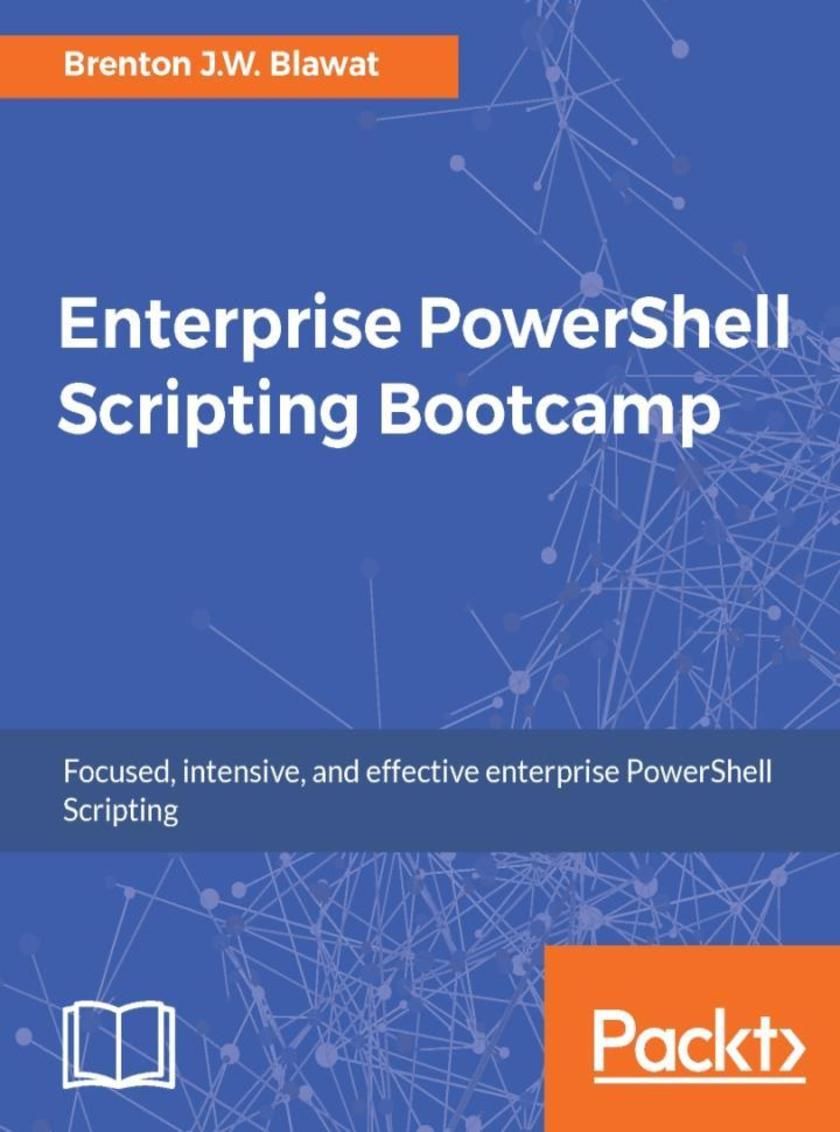
Enterprise PowerShell Scripting Bootcamp
¥80.65
The quick start guide for an advanced enterprise PowerShell framework About This Book ? Introduces industry-proven techniques that improve * efficiency and reliability ? Example-rich guide based on real-world scenarios ? Facilitates building a * that can fully scan a Windows server and identify components Who This Book Is For This book is for IT professionals and Windows administrators who would like to gain intensive, hands-on knowledge and skills on PowerShell without spending hours and hours in learning. If you have been struggling to find the time to gain proficiency and confidence with PowerShell and everyday *ing tasks What You Will Learn ? Create an advanced PowerShell *ing template that provides repeatable code to jumpstart all of your *ing projects ? Learn how to securely encrypt and store usernames, passwords, and other sensitive data in PowerShell *s and answer files ? Understand how to optimize the performance of *s to help process large datasets quickly and avoid time-consuming mistakes ? Develop a * to scan for non-standard Windows Server configurations and identify service accounts used on Windows Servers ? Gather a large list of data from a Windows server without locally or remotely logging in interactively In Detail Enterprise PowerShell Scripting Bootcamp explains how to create your own repeatable PowerShell *ing framework. This framework contains * logging methodologies, answer file interactions, and string encryption and decryption strategies. This book focuses on evaluating individual components to identify the system’s function, role, and unique characteristics. To do this, you will leverage built-in CMDlets and Windows Management Instrumentation (WMI) to explore Windows services, Windows processes, Windows features, scheduled tasks, and disk statistics. You will also create custom functions to perform a deep search for specific strings in files and evaluate installed software through executable properties. We will then discuss different *ing techniques to improve the efficiency of *s. By leveraging several small changes to your code, you can increase the execution performance by over 130%. By the end of this book, you will be able to tie all of the concepts together in a PowerShell-based Windows server scanning *. This discovery * will be able to scan a Windows server to identify a multitude of components. Style and approach This book is all about fast and intensive learning. This means, we don’t waste time in helping readers get started. The new content is about leveraging highly-effective examples to build new things, help solving problems in newer and unseen ways, and providing an enterprise-ready platform to create PowerShell Scripts.
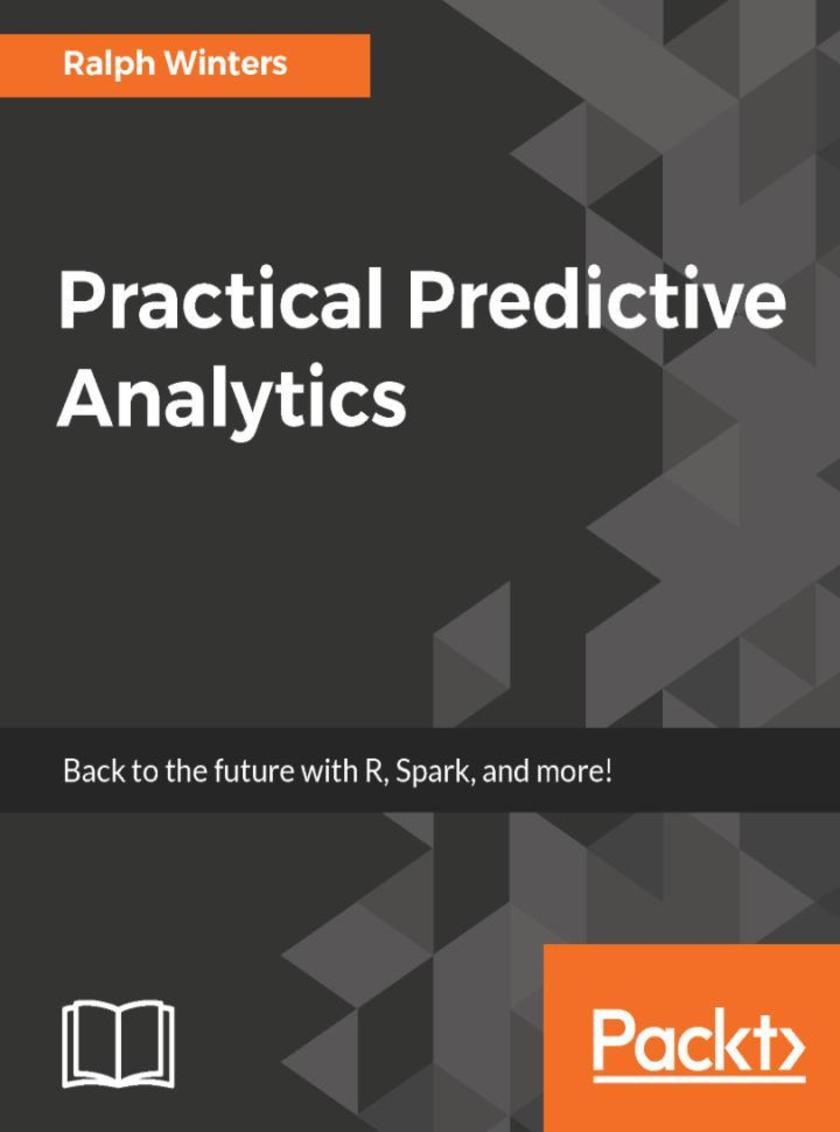
Practical Predictive Analytics
¥90.46
Make sense of your data and predict the unpredictable About This Book ? A unique book that centers around develop six key practical skills needed to develop and implement predictive analytics ? Apply the principles and techniques of predictive analytics to effectively interpret big data ? Solve real-world analytical problems with the help of practical case studies and real-world scenarios taken from the world of healthcare, marketing, and other business domains Who This Book Is For This book is for those with a mathematical/statistics background who wish to understand the concepts, techniques, and implementation of predictive analytics to resolve complex analytical issues. Basic familiarity with a programming language of R is expected. What You Will Learn ? Master the core predictive analytics algorithm which are used today in business ? Learn to implement the six steps for a successful analytics project ? Classify the right algorithm for your requirements ? Use and apply predictive analytics to research problems in healthcare ? Implement predictive analytics to retain and acquire your customers ? Use text mining to understand unstructured data ? Develop models on your own PC or in Spark/Hadoop environments ? Implement predictive analytics products for customers In Detail This is the go-to book for anyone interested in the steps needed to develop predictive analytics solutions with examples from the world of marketing, healthcare, and retail. We'll get started with a brief history of predictive analytics and learn about different roles and functions people play within a predictive analytics project. Then, we will learn about various ways of installing R along with their pros and cons, combined with a step-by-step installation of RStudio, and a de*ion of the best practices for organizing your projects. On completing the installation, we will begin to acquire the skills necessary to input, clean, and prepare your data for modeling. We will learn the six specific steps needed to implement and successfully deploy a predictive model starting from asking the right questions through model development and ending with deploying your predictive model into production. We will learn why collaboration is important and how agile iterative modeling cycles can increase your chances of developing and deploying the best successful model. We will continue your journey in the cloud by extending your skill set by learning about Databricks and SparkR, which allow you to develop predictive models on vast gigabytes of data. Style and Approach This book takes a practical hands-on approach wherein the algorithms will be explained with the help of real-world use cases. It is written in a well-researched academic style which is a great mix of theoretical and practical information. Code examples are supplied for both theoretical concepts as well as for the case studies. Key references and summaries will be provided at the end of each chapter so that you can explore those topics on their own.
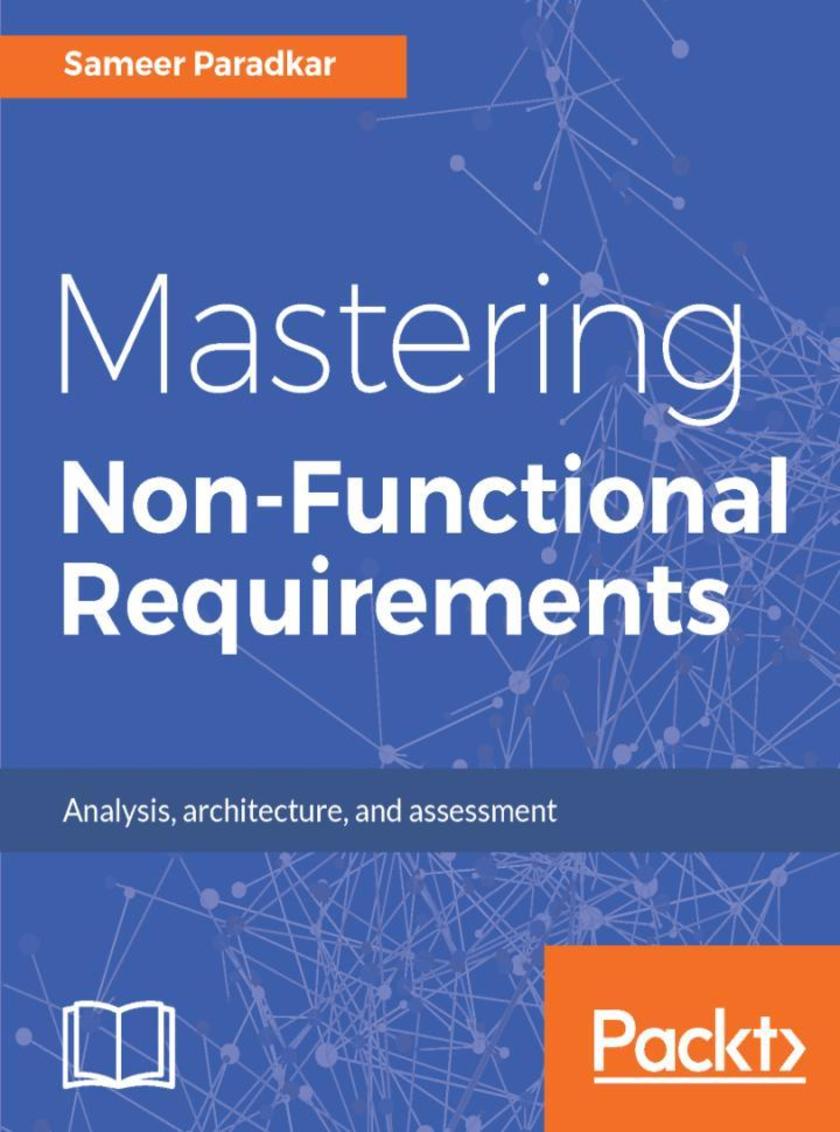
Mastering Non-Functional Requirements
¥71.93
This book covers the most critical 24 NFRs that are applicable to IT applications and systems. About This Book ? Explains three stages of nonfunctional requirements, that is, analysis, architecture, and assessment ? In-depth knowledge of NFR framework and taxonomy that provides guidance around the modelling phase for the NFRs ? Coverage of 24 critical and pivotal NFRs, including the analysis, architecture, and assessment. Who This Book Is For The primary audience for this title are the gamut of roles starting from IT consultant to chief architects who are responsible to deliver strategic, tactical, and operational engagements for fortune 100 customers worldwide. Nonfunctional requirements are the key to any software / IT program. They cannot be overlooked or ignored. The book provides a comprehensive approach from analysis, architecture, and measurement of nonfunctional requirements. The book includes considerations for bespoke (Java, .Net, and COTS applications). These are applicable to IT applications from various domains. The book outlines the methodology for capturing the NFRs and also describes a framework that can be leveraged by analysts and architects for tackling NFRs for various engagements. The audience for this book include business analysts, enterprise architects, business architects, solution architects, technical architects/designers, domain/security/integration architects, software developers, support engineers and test engineers, technical project managers, project leads/technical leads/technical project managers, and students from the computer science/IT stream What You Will Learn ? Learn techniques related to the analysis, architecture, and monitoring of NFRs ? Understand the various tools, techniques, and processes in order to improve the overall quality of the desired outcomes ? Embrace the best practices of architecting, metrics, and success factors for NFRs ? Identify the common pitfalls to be avoided and the patterns to leverage ? Understand taxonomy and framework for NFRs ? Learn the design guidelines for architecting applications and systems relating to NFRs ? Abstract different methodologies to analyze and gather NFRs In Detail Non-functional Requirements are key to any software/IT program and cannot be overlooked or ignored. This book provides a comprehensive approach to the analysis, architecture, and measurement of NFRs. It includes considerations for bespoke Java, .NET, and COTS applications that are applicable to IT applications/systems in different domains. The book outlines the methodology for capturing the NFRs and also describes a framework that can be leveraged by analysts and architects for tackling NFRs for various engagements. This book starts off by explaining the various KPIs, taxonomies, and methods for identifying NFRs. Learn the design guidelines for architecting applications and systems relating to NFRs and design principles to achieve the desired outcome. We will then move on to various key tiers/layers and patterns pertaining to the business, database, and integrating tiers. After this, we will dive deep into the topics pertaining to techniques related to monitoring and measurement of NFRs, such as sizing, analytical modeling, and quality assurance. Lastly, we end the book by describing some pivotal NFRs and checklists for the software quality attributes related to the business, application, data, and infrastructure domains. Style and approach The book takes a pragmatic approach, describing various techniques related to the analysis of NFRs, the architecture of NFRs, and assessment of NFRs.

PHP 7 Data Structures and Algorithms
¥80.65
Increase your productivity by implementing data structures About This Book ? Gain a complete understanding of data structures using a simple approach ? Analyze algorithms and learn when you should apply each solution ? Explore the true potential of functional data structures Who This Book Is For This book is for those who want to learn data structures and algorithms with PHP for better control over application-solution, efficiency, and optimization. A basic understanding of PHP data types, control structures, and other basic features is required What You Will Learn ? Gain a better understanding of PHP arrays as a basic data structure and their hidden power ? Grasp how to analyze algorithms and the Big O Notation ? Implement linked lists, double linked lists, stack, queues, and priority queues using PHP ? Work with sorting, searching, and recursive algorithms ? Make use of greedy, dynamic, and pattern matching algorithms ? Implement tree, heaps, and graph algorithms ? Apply PHP functional data structures and built-in data structures and algorithms In Detail PHP has always been the the go-to language for web based application development, but there are materials and resources you can refer to to see how it works. Data structures and algorithms help you to code and execute them effectively, cutting down on processing time significantly. If you want to explore data structures and algorithms in a practical way with real-life projects, then this book is for you. The book begins by introducing you to data structures and algorithms and how to solve a problem from beginning to end using them. Once you are well aware of the basics, it covers the core aspects like arrays, listed lists, stacks and queues. It will take you through several methods of finding efficient algorithms and show you which ones you should implement in each scenario. In addition to this, you will explore the possibilities of functional data structures using PHP and go through advanced algorithms and graphs as well as dynamic programming. By the end, you will be confident enough to tackle both basic and advanced data structures, understand how they work, and know when to use them in your day-to-day work Style and approach An easy-to-follow guide full of examples of implementation of data structures and real world examples to solve the problems faced. Each topic is first explained in general terms and then implemented using step by step explanation so that developers can understand each part of the discussion without any problem.
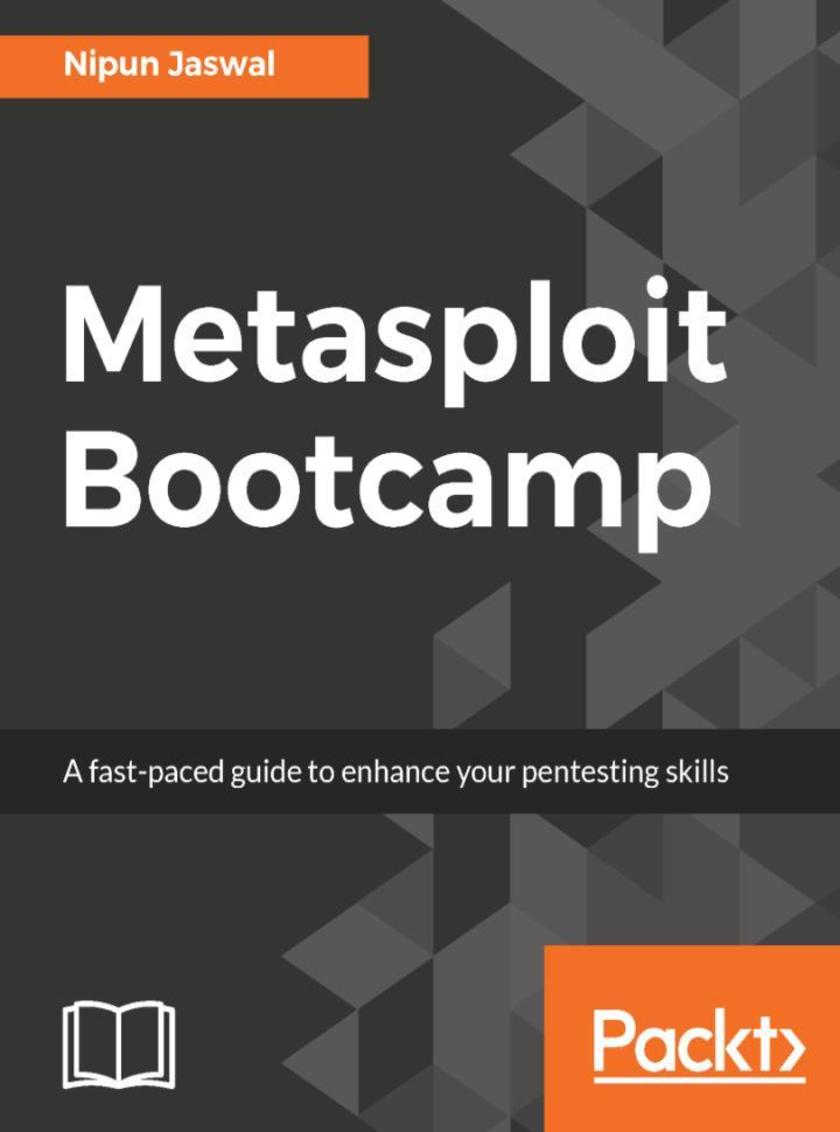
Metasploit Bootcamp
¥80.65
Master the art of penetration testing with Metasploit Framework in 7 days About This Book ? A fast-paced guide that will quickly enhance your penetration testing skills in just 7 days ? Carry out penetration testing in complex and highly-secured environments. ? Learn techniques to Integrate Metasploit with industry’s leading tools Who This Book Is For If you are a penetration tester, ethical hacker, or security consultant who quickly wants to master the Metasploit framework and carry out advanced penetration testing in highly secured environments then, this book is for you. What You Will Learn ? Get hands-on knowledge of Metasploit ? Perform penetration testing on services like Databases, VOIP and much more ? Understand how to Customize Metasploit modules and modify existing exploits ? Write simple yet powerful Metasploit automation *s ? Explore steps involved in post-exploitation on Android and mobile platforms. In Detail The book starts with a hands-on Day 1 chapter, covering the basics of the Metasploit framework and preparing the readers for a self-completion exercise at the end of every chapter. The Day 2 chapter dives deep into the use of scanning and fingerprinting services with Metasploit while helping the readers to modify existing modules according to their needs. Following on from the previous chapter, Day 3 will focus on exploiting various types of service and client-side exploitation while Day 4 will focus on post-exploitation, and writing quick *s that helps with gathering the required information from the exploited systems. The Day 5 chapter presents the reader with the techniques involved in scanning and exploiting various services, such as databases, mobile devices, and VOIP. The Day 6 chapter prepares the reader to speed up and integrate Metasploit with leading industry tools for penetration testing. Finally, Day 7 brings in sophisticated attack vectors and challenges based on the user’s preparation over the past six days and ends with a Metasploit challenge to solve. Style and approach This book is all about fast and intensive learning. That means we don’t waste time in helping readers get started. The new content is basically about filling in with highly-effective examples to build new things, show solving problems in newer and unseen ways, and solve real-world examples.
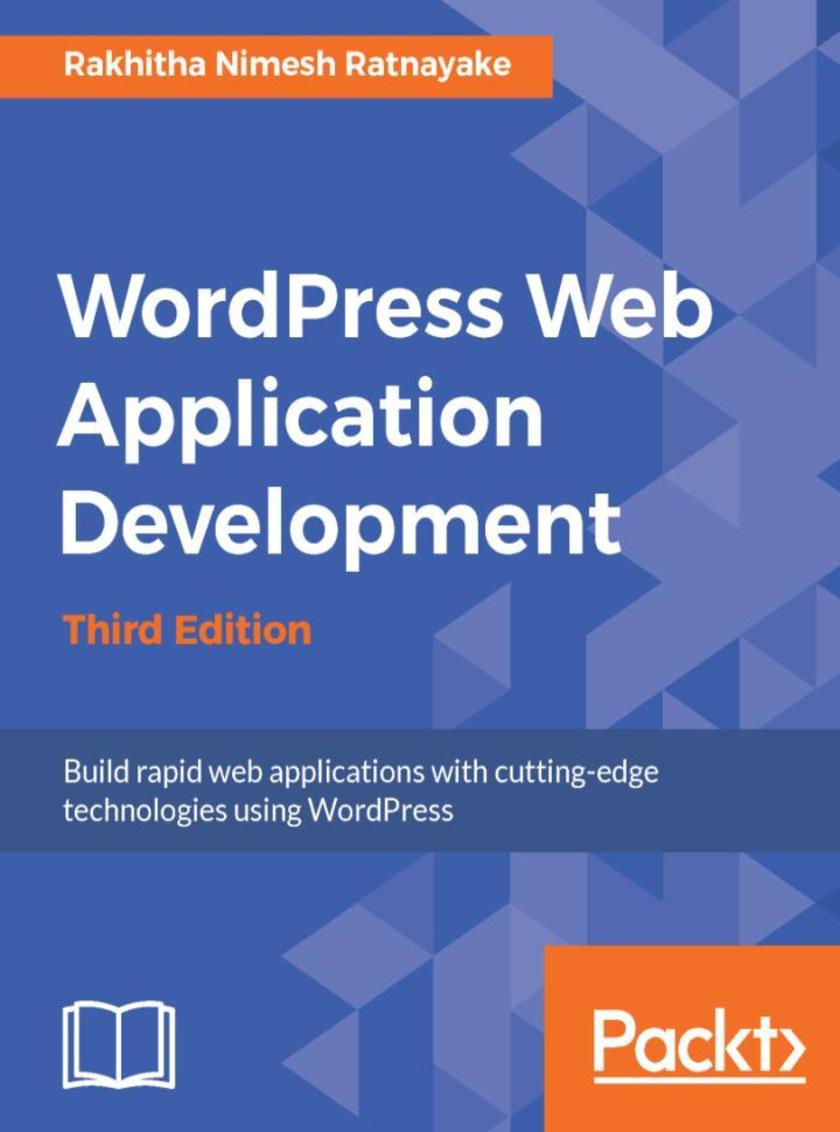
Wordpress Web Application Development - Third Edition
¥90.46
Learn in easy stages how to rapidly build leading-edge web applications from scratch. About This Book ? Develop powerful web applications rapidly with WordPress ? Explore the significant features and improvements introduced in WordPress 4.7 by learning the numerous tips and techniques in this book. ? Unleash the power of REST API endpoints to make your interaction with websites new and innovative. Who This Book Is For This book is targeted at WordPress developers and designers who want to develop quality web applications within a limited time frame and maximize their profits. A prior knowledge of basic web development and design is assumed. What You Will Learn ? Develop extendable plugins with the use of WordPress features in core modules ? Develop pluggable modules to extend the core features of WordPress as independent modules ? Manage permissions for a wide range of content types in web applications based on different user types ? Follow WordPress coding standards to develop reusable and maintainable code ? Build and customize themes beyond conventional web layouts ? Explore the power of core database tables and understand the limitations when designing database tables for large applications ? Integrate open source modules into WordPress applications to keep up with the latest open source technologies ? Customize the WordPress admin section and themes to create the look and feel of a typical web application In Detail WordPress is one of the most rapidly expanding markets on the Web. Learning how to build complex and scalable web applications will give you the ability and knowledge to step into the future of WordPress. WordPress 4.7 introduces some exciting new improvements and several bug fixes, which further improve the entire development process.This book is a practical, scenario-based guide to expanding the power of the WordPress core modules to develop modular and maintainable real-world applications from scratch. This book consistently emphasizes adapting WordPress features into web applications. It will walk you through the advanced usages of existing features such as access controlling; database handling; custom post types; pluggable plugins; content restrictions; routing; translation; caching; and many more, while you build the backend of a forum management application. This book begins by explaining how to plan the development of a web application using WordPress' core features. Once the core features are explained, you will learn how to build an application by extending them through custom plugin development. Finally, you will explore advanced non-functional features and application integration. After reading this book, you will have the ability to develop powerful web applications rapidly within limited time frames. Style and approach An extensive, practical guide that explains how to adapt WordPress features, both conventional and trending, for web applications.
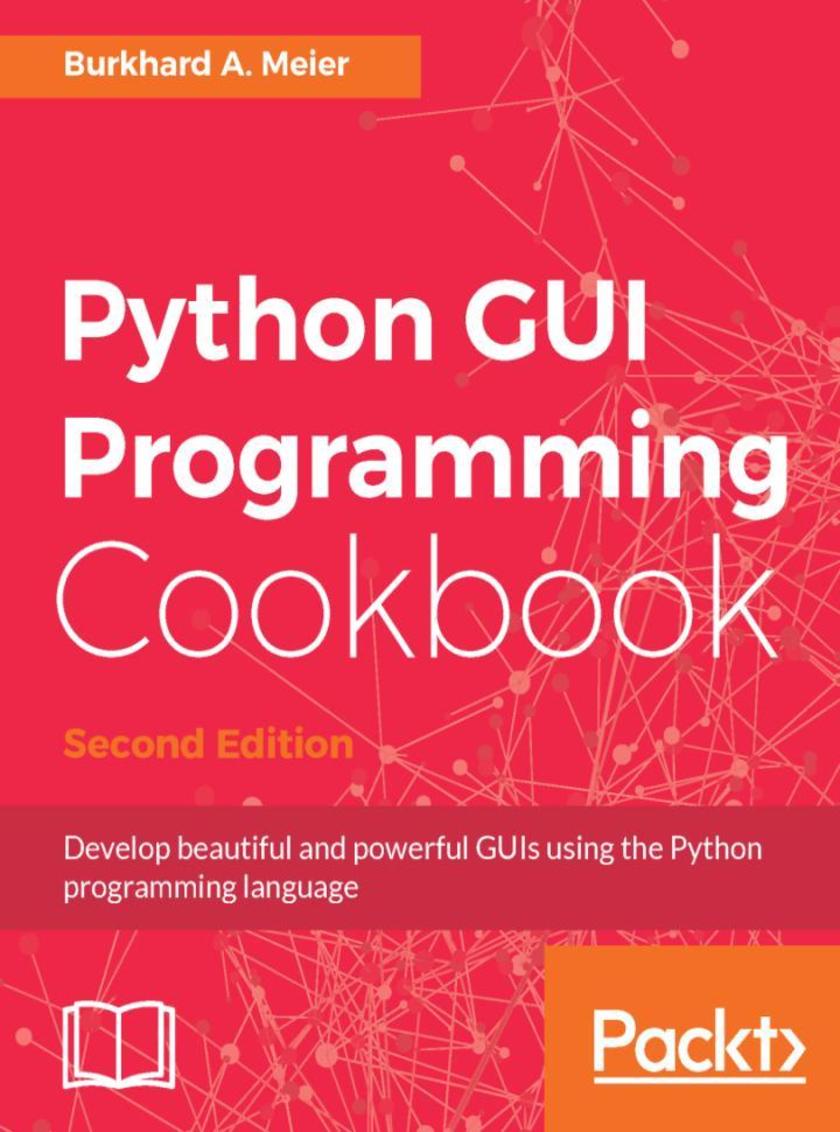
Python GUI Programming Cookbook - Second Edition
¥90.46
Master over 80 object-oriented recipes to create amazing GUIs in Python and revolutionize your applications today About This Book ? Use object-oriented programming to develop amazing GUIs in Python ? Create a working GUI project as a central resource for developing your Python GUIs ? Easy-to-follow recipes to help you develop code using the latest released version of Python Who This Book Is For This book is for intermediate Python programmers who wish to enhance their Python skills by writing powerful GUIs in Python. As Python is such a great and easy to learn language, this book is also ideal for any developer with experience of other languages and enthusiasm to expand their horizon. What You Will Learn ? Create the GUI Form and add widgets ? Arrange the widgets using layout managers ? Use object-oriented programming to create GUIs ? Create Matplotlib charts ? Use threads and talking to networks ? Talk to a MySQL database via the GUI ? Perform unit-testing and internationalizing the GUI ? Extend the GUI with third-party graphical libraries ? Get to know the best practices to create GUIs In Detail Python is a multi-domain, interpreted programming language. It is a widely used general-purpose, high-level programming language. It is often used as a *ing language because of its forgiving syntax and compatibility with a wide variety of different eco-systems. Python GUI Programming Cookbook follows a task-based approach to help you create beautiful and very effective GUIs with the least amount of code necessary. This book will guide you through the very basics of creating a fully functional GUI in Python with only a few lines of code. Each and every recipe adds more widgets to the GUIs we are creating. While the cookbook recipes all stand on their own, there is a common theme running through all of them. As our GUIs keep expanding, using more and more widgets, we start to talk to networks, databases, and graphical libraries that greatly enhance our GUI’s functionality. This book is what you need to expand your knowledge on the subject of GUIs, and make sure you’re not missing out in the long run. Style and approach This programming cookbook consists of standalone recipes, and this approach makes it unique.. While each recipe explains a certain concept, throughout the book you’ll build a more and more advanced GUI, recipe after recipe. In some of the advanced topics, we simply create a new GUI in order to explore these topics in depth.
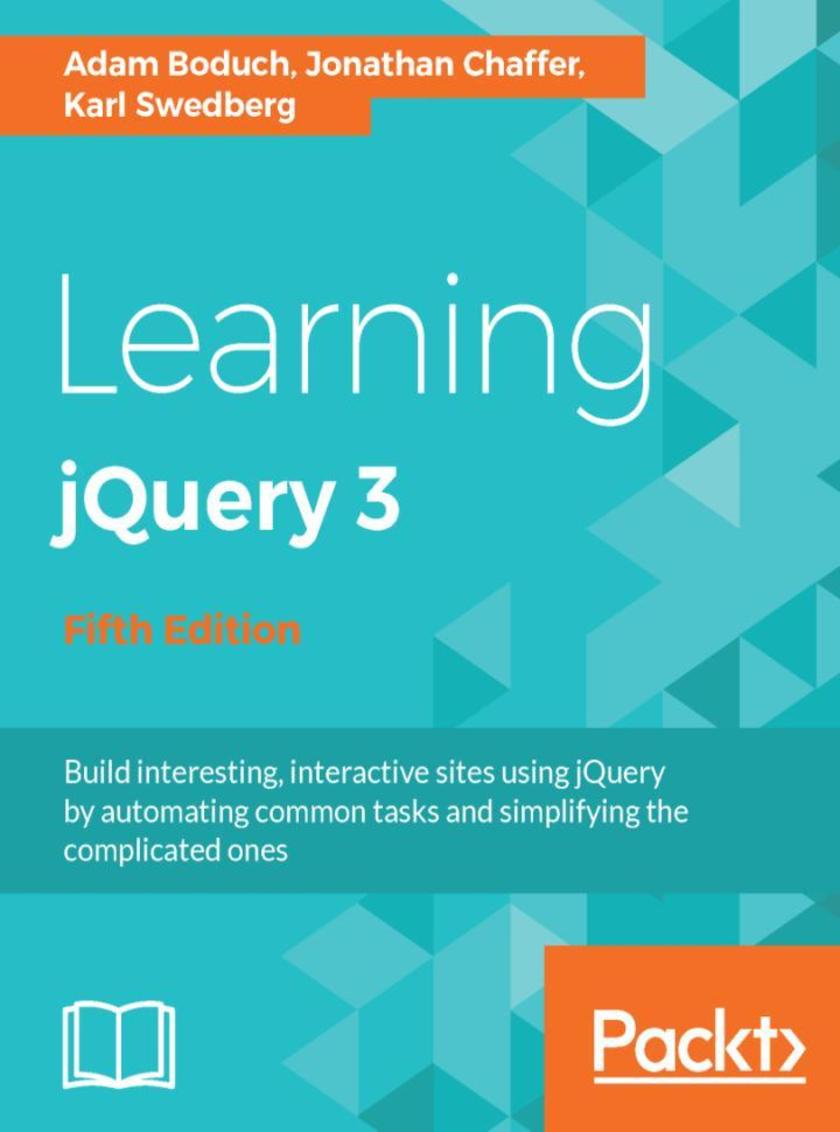
Learning jQuery 3 - Fifth Edition
¥71.93
Create efficient and smart web applications with jQuery 3.0 using this step-by-step practical tutorial About This Book ? Create a fully featured and responsive client-side application using jQuery ? Explore all the latest features of jQuery 3.0 and code examples updated to reflect modern JavaScript environments ? Develop high performance interactive pages Who This Book Is For This book is ideal for client-side JavaScript developers. You do need to have any previous experience with jQuery, although basic JavaScript programming knowledge is necessary. What You Will Learn ? Create custom interactive elements for your web designs ? Find out how to create the best user interface for your web applications ? Use selectors in a variety of ways to get anything you want from a page when you need it ? Master events to bring your web pages to life ? Add flair to your actions with a variety of different animation effects ? Discover the latest features available in jQuery with the latest update of this incredibly popular title ? Using jQuery npm Packages In Detail If you are a web developer and want to create web applications that look good, are efficient, have rich user interfaces, and integrate seamlessly with any backend using AJAX, then this book is the ideal match for you. We’ll show you how you can integrate jQuery 3.0 into your web pages, avoid complex JavaScript code, create brilliant animation effects for your web applications, and create a flawless app. We start by configuring and customising the jQuery environment, and getting hands-on with DOM manipulation. Next, we’ll explore event handling advanced animations, creating optimised user interfaces, and building useful third-party plugins. Also, we'll learn how to integrate jQuery with your favourite back-end framework. Moving on, we’ll learn how the ECMAScript 6 features affect your web development process with jQuery. we’ll discover how to use the newly introduced JavaScript promises and the new animation API in jQuery 3.0 in great detail, along with sample code and examples. By the end of the book, you will be able to successfully create a fully featured and efficient single page web application and leverage all the new features of jQuery 3.0 effectively. Style and approach Create efficient client-side apps that look great and run seamlessly across all devices with this step-by-step practical guide. There are illustrative examples for those who need extra help to get started with jQuery web development.
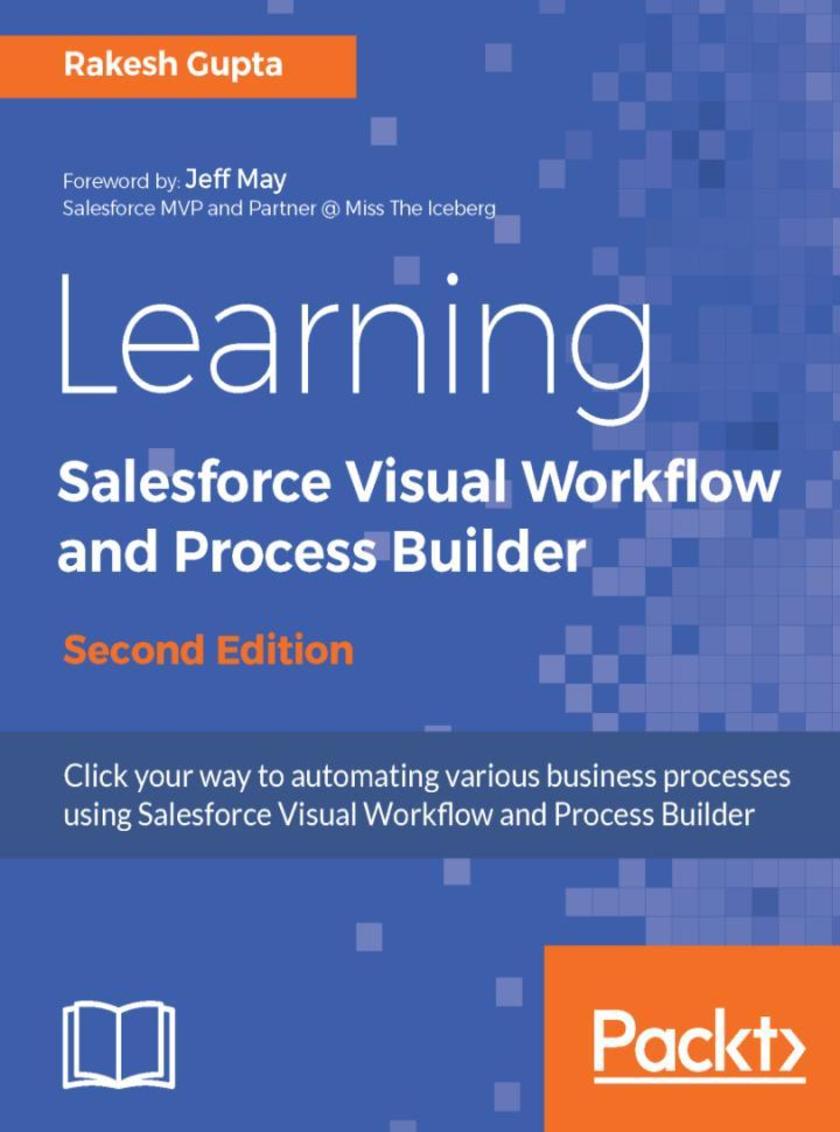
Learning Salesforce Visual Workflow and Process Builder - Second Edition
¥90.46
Click your way to automating various business processes using Salesforce Visual Workflow About This Book ? Develop an application using Point and Click with the help of Flow ? Get to grips with various ways to launch a Flow ? Capture data from an external user without using the Visualforce page ? Save user input into the database, and learn how to query and manipulate the data ? Discover various ways to debug and deploy Flow and Process Builder ? Understand the concepts of Subflow and Login Flow ? Handle complex business processes using Process builder and keep them clean ? Use existing or new Flows to work with Salesforce Lightning Experience. Who This Book Is For This book is intended for those who want to use Flows to automate their business requirements by clicking, not coding. No previous experience in computer coding or programming is required. What You Will Learn ? Develop an application using point and click with the help of Flow ? Get to grips with various ways to launch a Flow ? Capture data from an external user without using the Visualforce page ? Save user input into the database, and learn how to query and manipulate the data ? Discover various ways to debug and deploy Flow and Process Builder ? Understand the concepts of Subflow and Login Flow ? Handle complex business processes using Process builder and keep them clean ? Use existing or new Flows to work with Salesforce Lightning Experience. In Detail Salesforce Management System is an information system used in CRM to automate the business processes like sales and marketing. To implement this, Force.com developed a powerful tool called Visual Workflow to automate business processes by creating applications also called Flows. Learning Salesforce Visual Workflow, Second Edition is a practical guide on Flows that will enable you to develop custom applications in Salesforce with minimized code usage. The book starts with an introduction to Visual Workflows that teaches all the building blocks of creating Flows and use it efficiently. You will learn how to easily automate business processes and tackle complex business scenarios using Flows. The book explains the working of the Process Builder so you can create reusable processes. The book also covers how you can integrate existing or newly created Flows with the Salesforce Lightening Experience. By the end of the book, you will get a clear understanding on how to use Flows and Process Builder in your organization to optimize code usage. Style and approach Step by step approch to use Process Builder to solve complex business requirements with the help of Flow
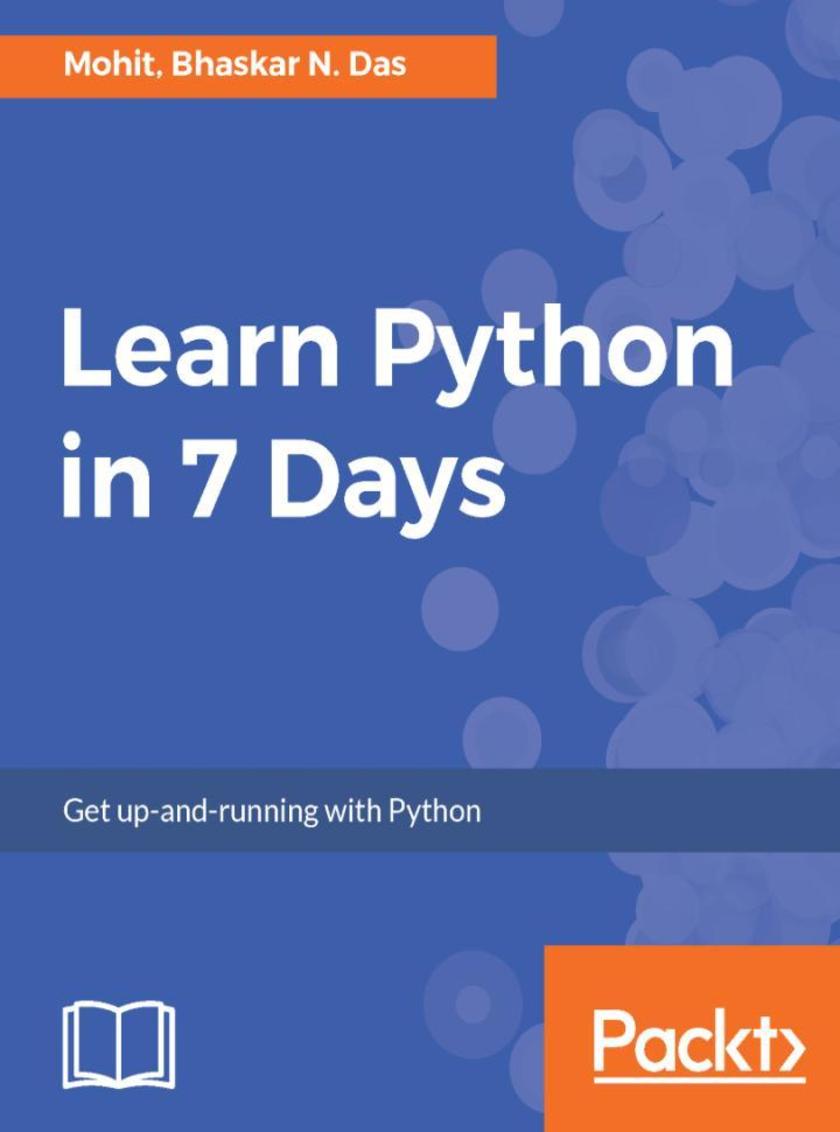
Learn Python in 7 Days
¥71.93
Learn efficient Python coding within 7 days About This Book ? Make the best of Python features ? Learn the tinge of Python in 7 days ? Learn complex concepts using the most simple examples Who This Book Is For The book is aimed at aspiring developers and absolute novice who want to get started with the world of programming. We assume no knowledge of Python for this book. What You Will Learn ? Use if else statement with loops and how to break, skip the loop ? Get acquainted with python types and its operators ? Create modules and packages ? Learn slicing, indexing and string methods ? Explore advanced concepts like collections, class and objects ? Learn dictionary operation and methods ? Discover the scope and function of variables with arguments and return value In Detail Python is a great language to get started in the world of programming and application development. This book will help you to take your skills to the next level having a good knowledge of the fundamentals of Python. We begin with the absolute foundation, covering the basic syntax, type variables and operators. We'll then move on to concepts like statements, arrays, operators, string processing and I/O handling. You’ll be able to learn how to operate tuples and understand the functions and methods of lists. We’ll help you develop a deep understanding of list and tuples and learn python dictionary. As you progress through the book, you’ll learn about function parameters and how to use control statements with the loop. You’ll further learn how to create modules and packages, storing of data as well as handling errors. We later dive into advanced level concepts such as Python collections and how to use class, methods, objects in python. By the end of this book, you will be able to take your skills to the next level having a good knowledge of the fundamentals of Python. Style and approach Fast paced guide to get you up-to-speed with the language. Every chapter is followed by an exercise that focuses on building something with the language. The codes of the exercises can be found on the Packt website
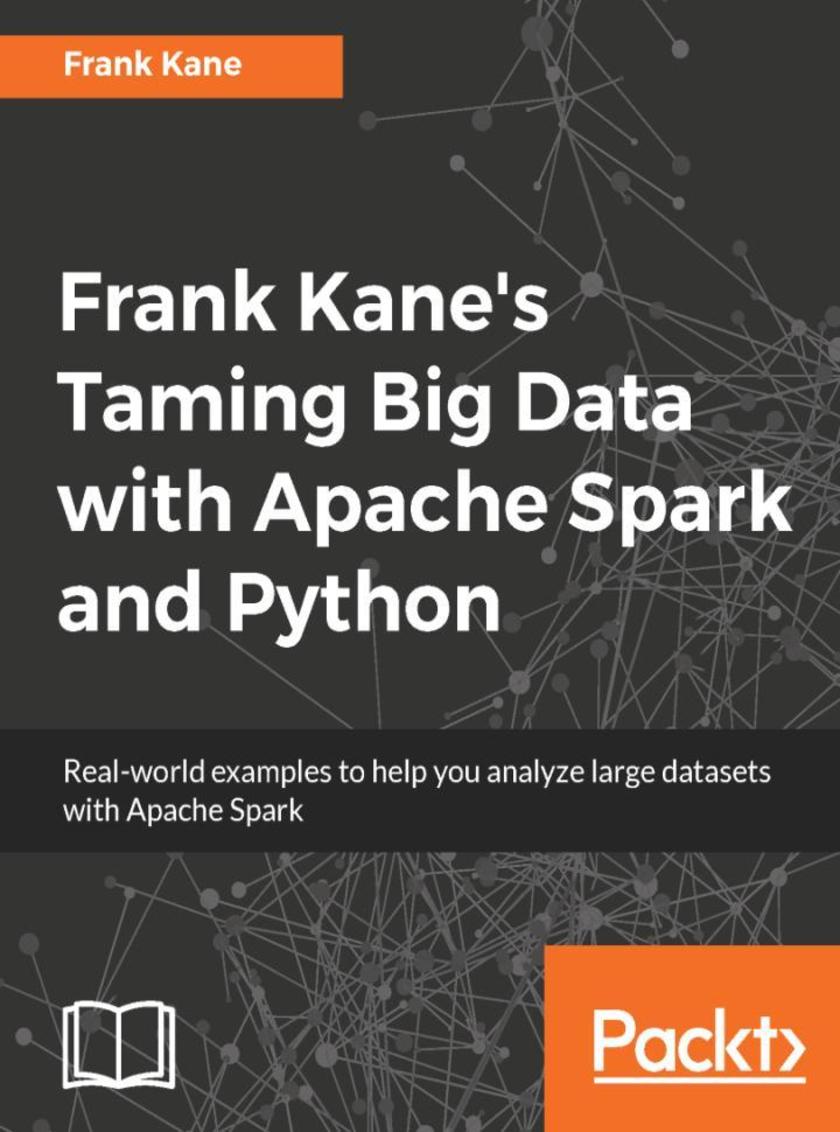
Frank Kane's Taming Big Data with Apache Spark and Python
¥71.93
Frank Kane’s hands-on Spark training course, based on his bestselling Taming Big Data with Apache Spark and Python video, now available in a book. Understand and analyze large data sets using Spark on a single system or on a cluster. About This Book ? Understand how Spark can be distributed across computing clusters ? Develop and run Spark jobs efficiently using Python ? A hands-on tutorial by Frank Kane with over 15 real-world examples teaching you Big Data processing with Spark Who This Book Is For If you are a data scientist or data analyst who wants to learn Big Data processing using Apache Spark and Python, this book is for you. If you have some programming experience in Python, and want to learn how to process large amounts of data using Apache Spark, Frank Kane’s Taming Big Data with Apache Spark and Python will also help you. What You Will Learn ? Find out how you can identify Big Data problems as Spark problems ? Install and run Apache Spark on your computer or on a cluster ? Analyze large data sets across many CPUs using Spark’s Resilient Distributed Datasets ? Implement machine learning on Spark using the MLlib library ? Process continuous streams of data in real time using the Spark streaming module ? Perform complex network analysis using Spark’s GraphX library ? Use Amazon's Elastic MapReduce service to run your Spark jobs on a cluster In Detail Frank Kane’s Taming Big Data with Apache Spark and Python is your companion to learning Apache Spark in a hands-on manner. Frank will start you off by teaching you how to set up Spark on a single system or on a cluster, and you’ll soon move on to analyzing large data sets using Spark RDD, and developing and running effective Spark jobs quickly using Python. Apache Spark has emerged as the next big thing in the Big Data domain – quickly rising from an ascending technology to an established superstar in just a matter of years. Spark allows you to quickly extract actionable insights from large amounts of data, on a real-time basis, making it an essential tool in many modern businesses. Frank has packed this book with over 15 interactive, fun-filled examples relevant to the real world, and he will empower you to understand the Spark ecosystem and implement production-grade real-time Spark projects with ease. Style and approach Frank Kane’s Taming Big Data with Apache Spark and Python is a hands-on tutorial with over 15 real-world examples carefully explained by Frank in a step-by-step manner. The examples vary in complexity, and you can move through them at your own pace.
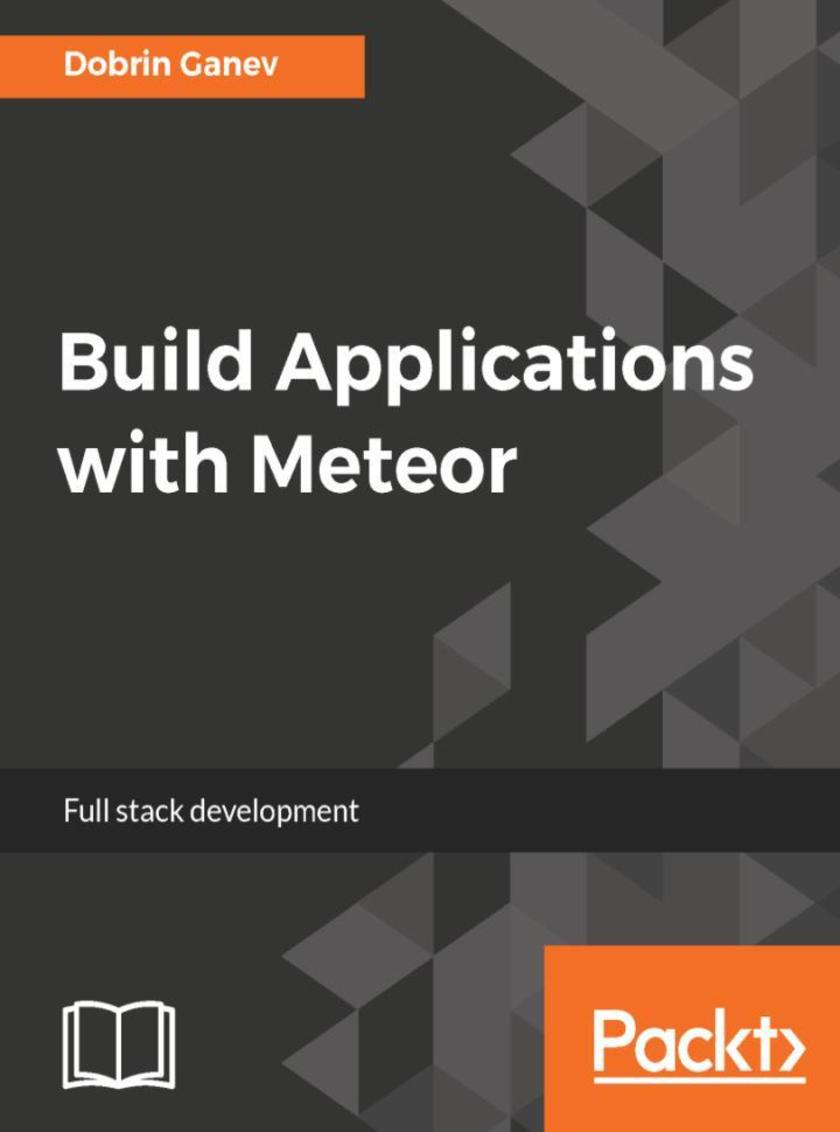
Build Applications with Meteor
¥80.65
Build a variety of cross-platform applications with the world’s most complete full-stack JavaScript framework— Meteor About This Book ? Develop a set of real-world applications each exploring different features of Meteor ? Make your app more appealing by adding reactivity and responsiveness to it ? Work with the most powerful feature of Meteor—the “full stack reactivity”—through building real-time applications with many third party libraries Who This Book Is For If you are a developer who is looking forward to taking your application development skills with Meteor to next level by getting your hands-on different projects, this book is for you. What You Will Learn ? See how Meteor fits in the modern web application development by using its reactive data system ? Make your front-end behave consistently across environments by implementing a predictable state container with Redux ? Get familiar with React and overview of Angular 2 ? Add a map to your application with a real-time geolocation ? Plugin into Meteor social media APIs like Twitter’s streaming and Facebook’s Messenger ? Add search functionality from scratch to your existing app and data ? Add responsiveness with Bootstrap 4 and Google’s Material Design using Less and Sass ? Distribute your data across machines and data centers by adding Apache Cassandra to your existing stack. ? Learn how to scale your microservices with the high performant language neutral framework gRPC. ? Learn how to query multiple data sources using GraphQL. In Detail This book starts with the basic installation and overview of the main components in Meteor. You’ll get hands-on multiple versatile applications covering a wide range of topics from adding a front-end views with the hottest rendering technology React to implementing a microservices oriented architecture.All the code is written with ES6/7 which is the latest significantly improved JavaScript language. We’ll also look at real-time data streaming, server to server data exchange, responsive styles on the front-end, full-text search functionality, and integration of many third-party libraries and APIs using npm. By the end of the book, you’ll have the skills to quickly prototype and even launch your next app idea in a matter of days. Style and Approach This book takes an easy-to-follow project-based approach. Each project starts with the goal of what you will learn and an overview the technologies used.
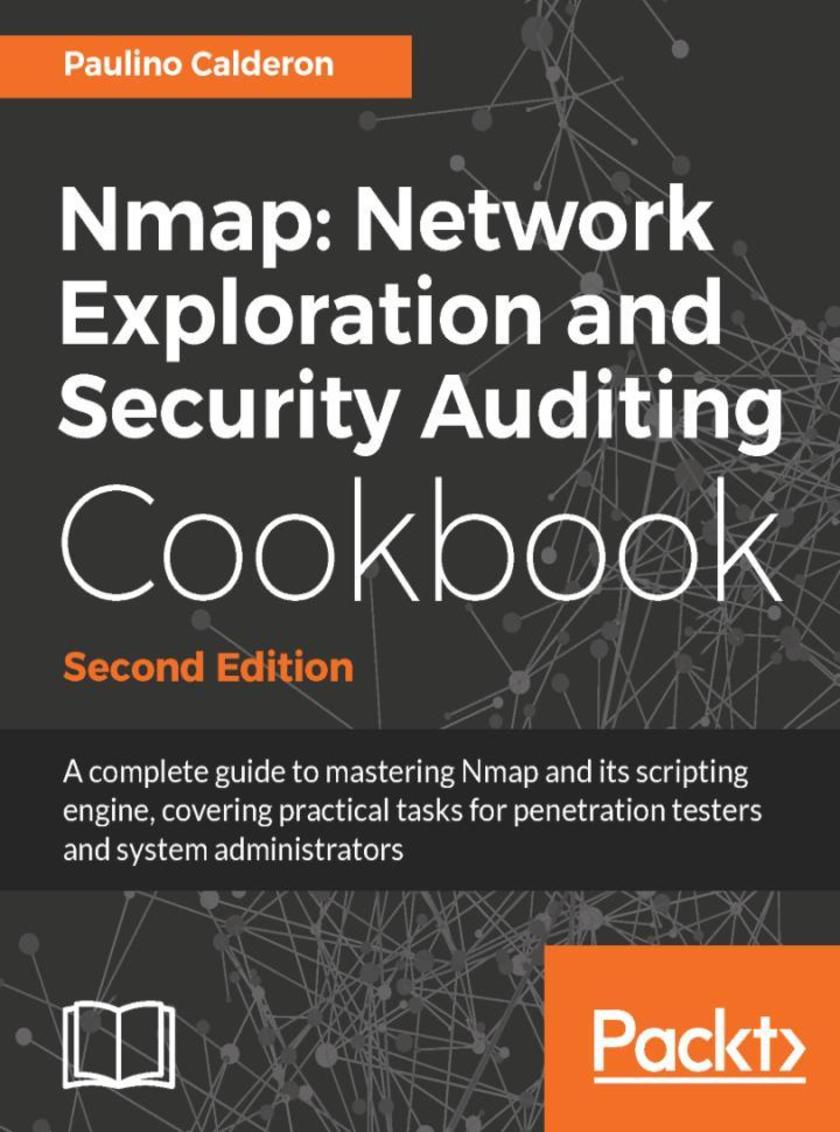
Nmap: Network Exploration and Security Auditing Cookbook - Second Edition
¥90.46
Over 100 practical recipes related to network and application security auditing using the powerful Nmap About This Book ? Learn through practical recipes how to use Nmap for a wide range of tasks for system administrators and penetration testers. ? Learn the latest and most useful features of Nmap and the Nmap Scripting Engine. ? Learn to audit the security of networks, web applications, databases, mail servers, Microsoft Windows servers/workstations and even ICS systems. ? Learn to develop your own modules for the Nmap Scripting Engine. ? Become familiar with Lua programming. ? 100% practical tasks, relevant and explained step-by-step with exact commands and optional arguments de*ion Who This Book Is For The book is for anyone who wants to master Nmap and its *ing engine to perform real life security auditing checks for system administrators and penetration testers. This book is also recommended to anyone looking to learn about network security auditing. Finally, novice Nmap users will also learn a lot from this book as it covers several advanced internal aspects of Nmap and related tools. What You Will Learn ? Learn about Nmap and related tools, such as Ncat, Ncrack, Ndiff, Zenmap and the Nmap Scripting Engine ? Master basic and advanced techniques to perform port scanning and host discovery ? Detect insecure configurations and vulnerabilities in web servers, databases, and mail servers ? Learn how to detect insecure Microsoft Windows workstations and scan networks using the Active Directory technology ? Learn how to safely identify and scan critical ICS/SCADA systems ? Learn how to optimize the performance and behavior of your scans ? Learn about advanced reporting ? Learn the fundamentals of Lua programming ? Become familiar with the development libraries shipped with the NSE ? Write your own Nmap Scripting Engine *s In Detail This is the second edition of 'Nmap 6: Network Exploration and Security Auditing Cookbook'. A book aimed for anyone who wants to master Nmap and its *ing engine through practical tasks for system administrators and penetration testers. Besides introducing the most powerful features of Nmap and related tools, common security auditing tasks for local and remote networks, web applications, databases, mail servers, Microsoft Windows machines and even ICS SCADA systems are explained step by step with exact commands and argument explanations. The book starts with the basic usage of Nmap and related tools like Ncat, Ncrack, Ndiff and Zenmap. The Nmap Scripting Engine is thoroughly covered through security checks used commonly in real-life scenarios applied for different types of systems. New chapters for Microsoft Windows and ICS SCADA systems were added and every recipe was revised. This edition reflects the latest updates and hottest additions to the Nmap project to date. The book will also introduce you to Lua programming and NSE * development allowing you to extend further the power of Nmap. Style and approach This book consists of practical recipes on network exploration and security auditing techniques, enabling you to get hands-on experience through real life scenarios.
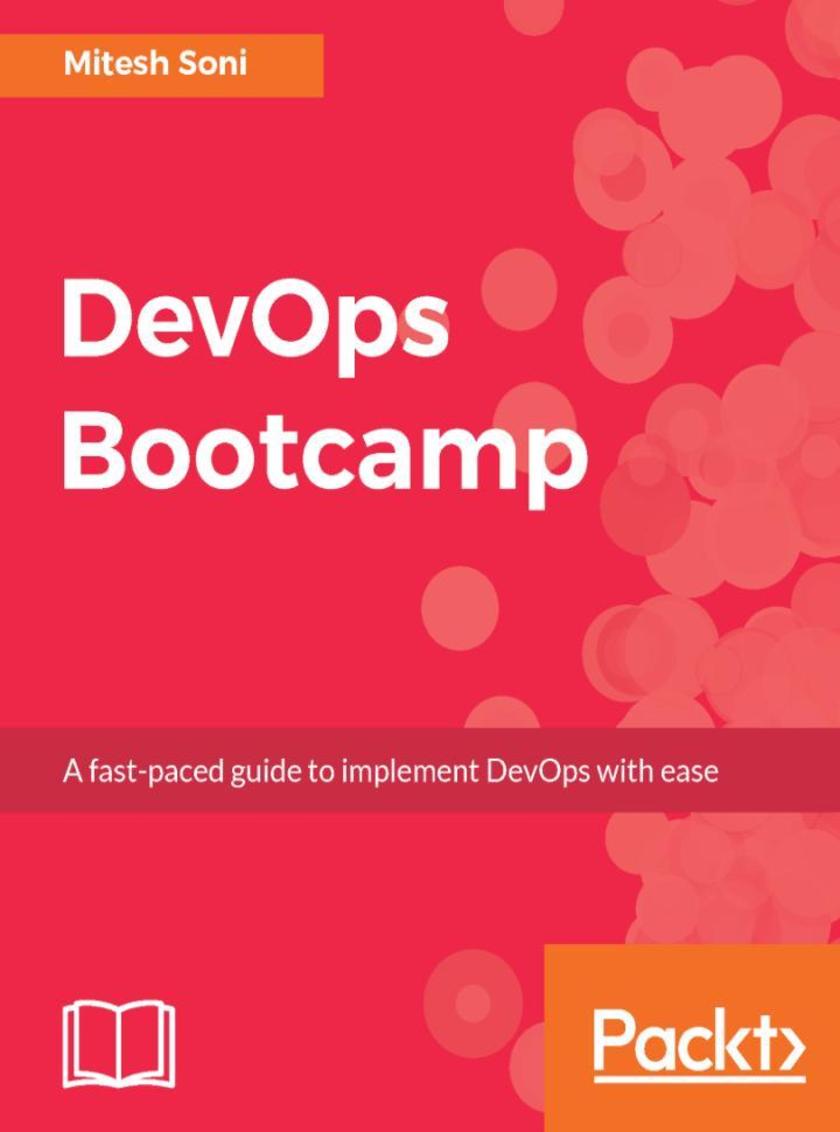
DevOps Bootcamp
¥71.93
Sharpen your DevOps knowledge with DevOps Bootcamp About This Book ? Improve your organization's performance to ensure smooth production of software and services. ? Learn how Continuous Integration and Continuous Delivery practices can be utilized to cultivate the DevOps culture. ? A fast-paced guide filled with illustrations and best practices to help you consistently ship quality software. Who This Book Is For The book is aimed at IT Developers and Operations—administrators who want to quickly learn and implement the DevOps culture in their organization. What You Will Learn ? Static Code Analysis using SOnarqube ? Configure a Maven-based JEE Web Application ? Perform Continuous Integration using Jenkins and VSTS ? Install and configure Docker ? Converge a Chef node using a Chef workstation ? Accomplish Continuous Delivery in Microsoft Azure VM and Microsoft Azure App Services (Azure Web Apps) using Jenkins ? Perform Load Testing using Apache JMeter ? Build and Release Automation using Visual Studio Team Services ? Monitor Cloud-based resources In Detail DevOps Bootcamp delivers practical learning modules in manageable chunks. Each chunk is delivered in a day, and each day is a productive one. Each day builds your competency in DevOps. You will be able to take the task you learn every day and apply it to cultivate the DevOps culture. Each chapter presents core concepts and key takeaways about a topic in DevOps and provides a series of hands-on exercises. You will not only learn the importance of basic concepts or practices of DevOps but also how to use different tools to automate application lifecycle management. We will start off by building the foundation of the DevOps concepts. On day two, we will perform Continuous Integration using Jenkins and VSTS both by configuring Maven-based JEE Web Application?. We will also integrate Jenkins and Sonar qube for Static Code Analysis. Further, on day three, we will focus on Docker containers where we will install and configure Docker and also create a Tomcat Container to deploy our Java based web application. On day four, we will create and configure the environment for application deployment in AWS and Microsoft Azure Cloud for which we will use Infrastructure as a Service and Open Source Configuration Management tool Chef. For day five, our focus would be on Continuous Delivery. We will automate application deployment in Docker container using Jenkins Plugin, AWS EC2 using Script, AWS Elastic Beanstalk using Jenkins Plugin, Microsoft Azure VM using *, and Microsoft Azure App Services Using Jenkins. We will also configure Continuous Delivery using VSTS. We will then learn the concept of Automated Testing on day six using Apache JMeter and URL-based tests in VSTS. Further, on day seven, we will explore various ways to automate application lifecycle management using orchestration. We will see how Pipeline can be created in Jenkins and VSTS, so the moment Continuous? Integration is completed successfully, Continuous Delivery will start and application will be deployed. On the final day, our focus would be on Security access to Jenkins and Monitoring of CI resources, and cloud-based resources in AWS and Microsoft Azure Platform as a Service. Style and Approach This book is all about fast and intensive learning. This means we don’t waste time in helping readers get started. The new content is basically about filling in with highly-effective examples to build new things, solving problems in newer and unseen ways, and solving real-world examples.
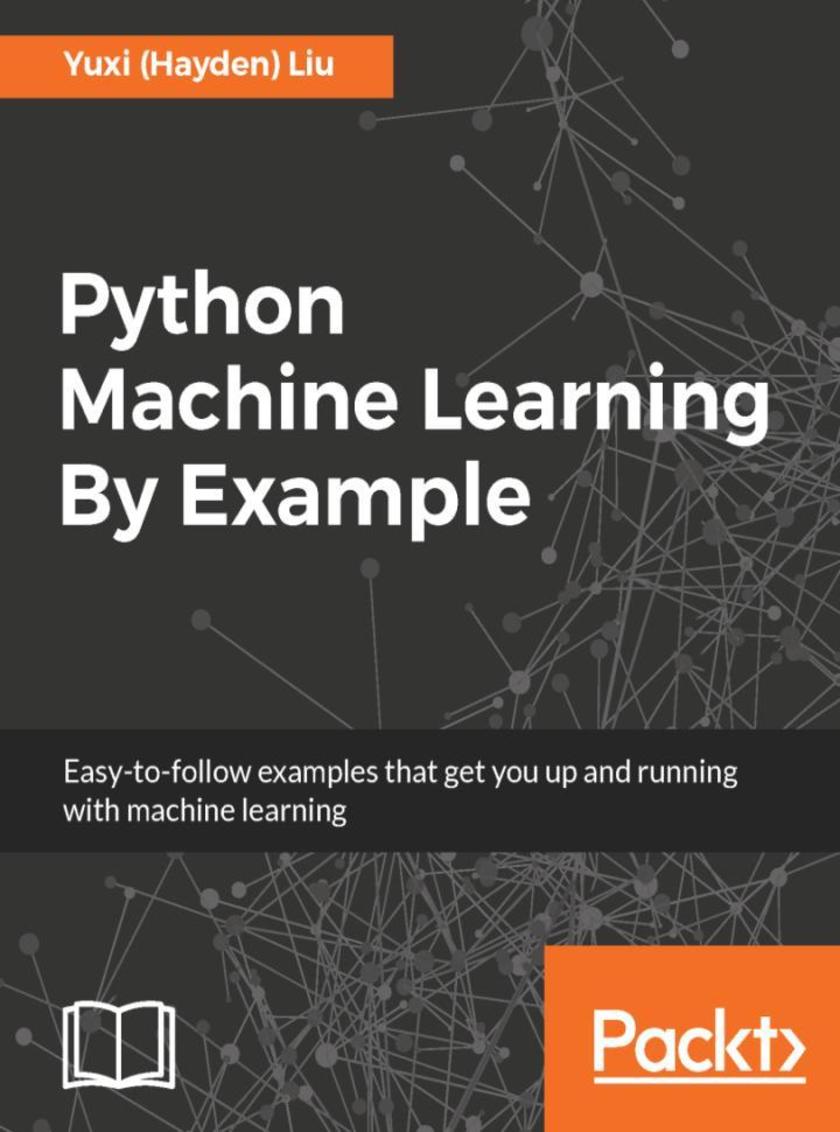
Python Machine Learning By Example
¥90.46
Take tiny steps to enter the big world of data science through this interesting guide About This Book ? Learn the fundamentals of machine learning and build your own intelligent applications ? Master the art of building your own machine learning systems with this example-based practical guide ? Work with important classification and regression algorithms and other machine learning techniques Who This Book Is For This book is for anyone interested in entering the data science stream with machine learning. Basic familiarity with Python is assumed. What You Will Learn ? Exploit the power of Python to handle data extraction, manipulation, and exploration techniques ? Use Python to visualize data spread across multiple dimensions and extract useful features ? Dive deep into the world of analytics to predict situations correctly ? Implement machine learning classification and regression algorithms from scratch in Python ? Be amazed to see the algorithms in action ? Evaluate the performance of a machine learning model and optimize it ? Solve interesting real-world problems using machine learning and Python as the journey unfolds In Detail Data science and machine learning are some of the top buzzwords in the technical world today. A resurging interest in machine learning is due to the same factors that have made data mining and Bayesian analysis more popular than ever. This book is your entry point to machine learning. This book starts with an introduction to machine learning and the Python language and shows you how to complete the setup. Moving ahead, you will learn all the important concepts such as, exploratory data analysis, data preprocessing, feature extraction, data visualization and clustering, classification, regression and model performance evaluation. With the help of various projects included, you will find it intriguing to acquire the mechanics of several important machine learning algorithms – they are no more obscure as they thought. Also, you will be guided step by step to build your own models from scratch. Toward the end, you will gather a broad picture of the machine learning ecosystem and best practices of applying machine learning techniques. Through this book, you will learn to tackle data-driven problems and implement your solutions with the powerful yet simple language, Python. Interesting and easy-to-follow examples, to name some, news topic classification, spam email detection, online ad click-through prediction, stock prices forecast, will keep you glued till you reach your goal. Style and approach This book is an enticing journey that starts from the very basics and gradually picks up pace as the story unfolds. Each concept is first succinctly defined in the larger context of things, followed by a detailed explanation of their application. Every concept is explained with the help of a project that solves a real-world problem, and involves hands-on work—giving you a deep insight into the world of machine learning. With simple yet rich language—Python—you will understand and be able to implement the examples with ease.
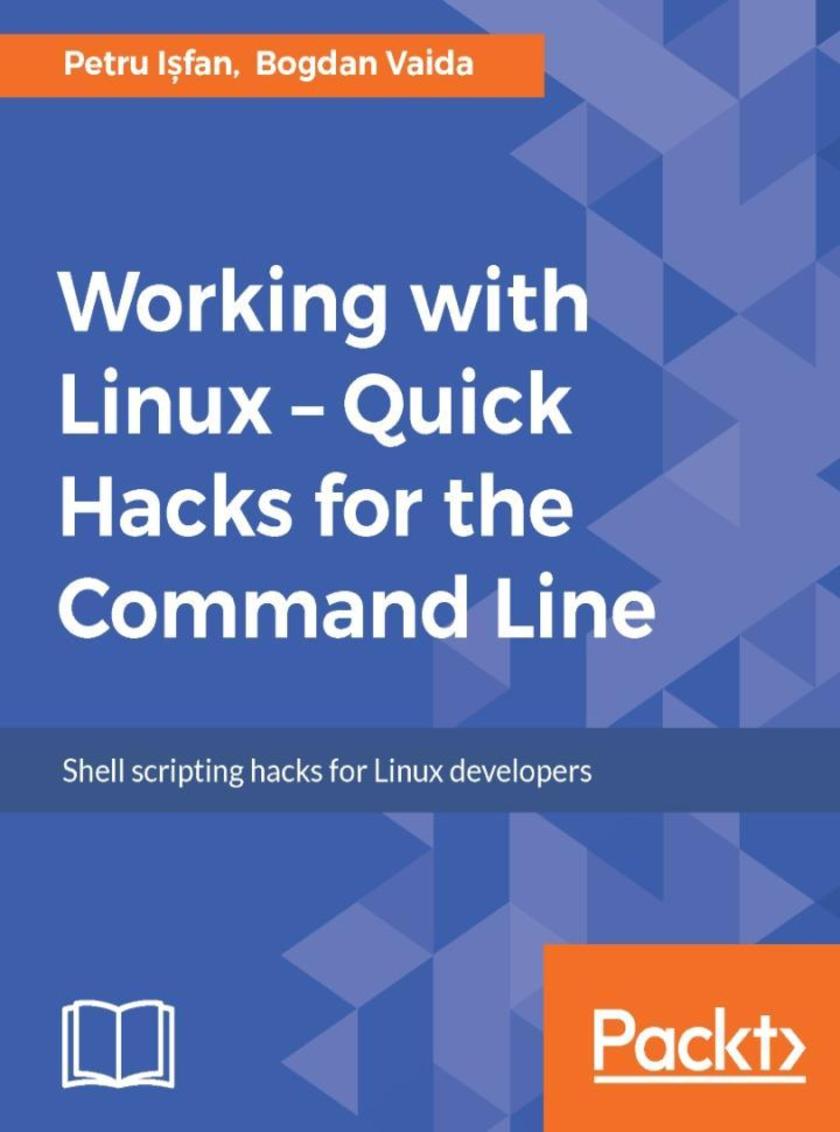
Working with Linux – Quick Hacks for the Command Line
¥71.93
Say goodbye to unproductive Linux habits and switch to the express lane About This Book ? Improve your terminal and command-line productivity by using powerful tools ? Sharpen your existing command-line skills and achieve complex tasks faster ? Save time and money by creating customized commands that automate day-to-day tasks Who This Book Is For This book is for system administrators and developers who know the basics of Linux and want to brush up and sharpen their skills. Prior experience with Linux shell is required. What You Will Learn ? Optimize the power of Guake by integrating it with ClipIt ? Deep dive into the workings of the console editor—Vim ? Explore the advanced concepts and best practices of shell *ing ? Edit large amounts of data quickly using Sed ? Use pipes and subshells to create customized commands ? Get to know how you can speed up the software development and make the terminal a handy companion In Detail Websites, online services, databases, and pretty much every other computer that offers public services runs on Linux. From small servers to clusters, Linux is anywhere and everywhere. With such a broad usage, the demand for Linux specialists is ever growing. For the engineers out there, this means being able to develop, interconnect, and maintain Linux environments. This book will help you increase your terminal productivity by using Terminator, Guake and other tools. It will start by installing Ubuntu and will explore tools and techniques that will help you to achieve more work with less effort. Next, it will then focus on Terminator, the ultimate terminal, and vim, one of the most intelligent console editors. Futhermore, the readers will see how they can increase their command line productivity by using sed, find, tmux, network, autoenv. The readers will also see how they can edit files without leaving the terminal and use the screen space efficiently and copy-paste like a pro. Towards the end, we focus on network settings, Git hacks, and creating portable environments for development and production using Docker. Through this book, you will improve your terminal productivity by seeing how to use different tools. Style and Approach This book takes a step-by-step approach using examples that show you how to automate tasks using terminal commands. You’ll work through easy-to-follow instructions so you learn to use the various Linux commands and tools such as Terminator, Guake, and others.
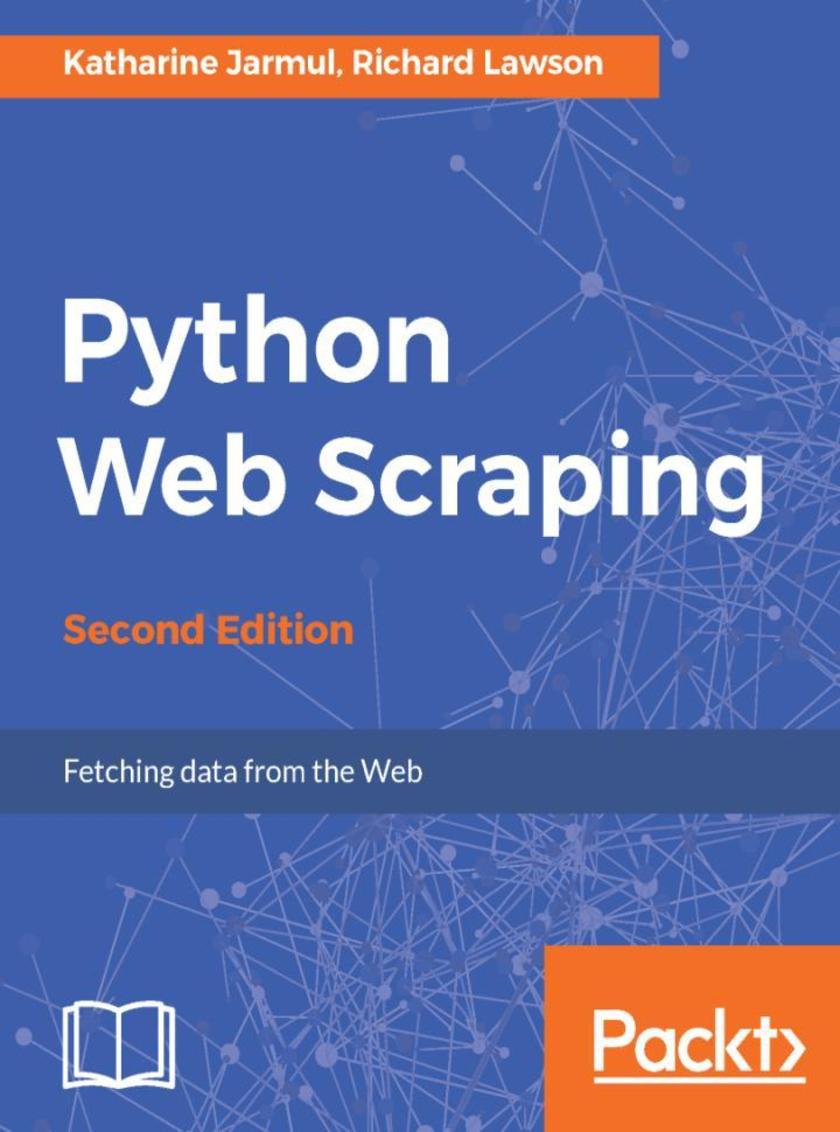
Python Web Scraping - Second Edition
¥63.21
Successfully scrape data from any website with the power of Python 3.x About This Book ? A hands-on guide to web scraping using Python with solutions to real-world problems ? Create a number of different web scrapers in Python to extract information ? This book includes practical examples on using the popular and well-maintained libraries in Python for your web scraping needs Who This Book Is For This book is aimed at developers who want to use web scraping for legitimate purposes. Prior programming experience with Python would be useful but not essential. Anyone with general knowledge of programming languages should be able to pick up the book and understand the principals involved. What You Will Learn ? Extract data from web pages with simple Python programming ? Build a concurrent crawler to process web pages in parallel ? Follow links to crawl a website ? Extract features from the HTML ? Cache downloaded HTML for reuse ? Compare concurrent models to determine the fastest crawler ? Find out how to parse JavaScript-dependent websites ? Interact with forms and sessions In Detail The Internet contains the most useful set of data ever assembled, most of which is publicly accessible for free. However, this data is not easily usable. It is embedded within the structure and style of websites and needs to be carefully extracted. Web scraping is becoming increasingly useful as a means to gather and make sense of the wealth of information available online. This book is the ultimate guide to using the latest features of Python 3.x to scrape data from websites. In the early chapters, you’ll see how to extract data from static web pages. You’ll learn to use caching with databases and files to save time and manage the load on servers. After covering the basics, you’ll get hands-on practice building a more sophisticated crawler using browsers, crawlers, and concurrent scrapers. You’ll determine when and how to scrape data from a JavaScript-dependent website using PyQt and Selenium. You’ll get a better understanding of how to submit forms on complex websites protected by CAPTCHA. You’ll find out how to automate these actions with Python packages such as mechanize. You’ll also learn how to create class-based scrapers with Scrapy libraries and implement your learning on real websites. By the end of the book, you will have explored testing websites with scrapers, remote scraping, best practices, working with images, and many other relevant topics. Style and approach This hands-on guide is full of real-life examples and solutions starting simple and then progressively becoming more complex. Each chapter in this book introduces a problem and then provides one or more possible solutions.
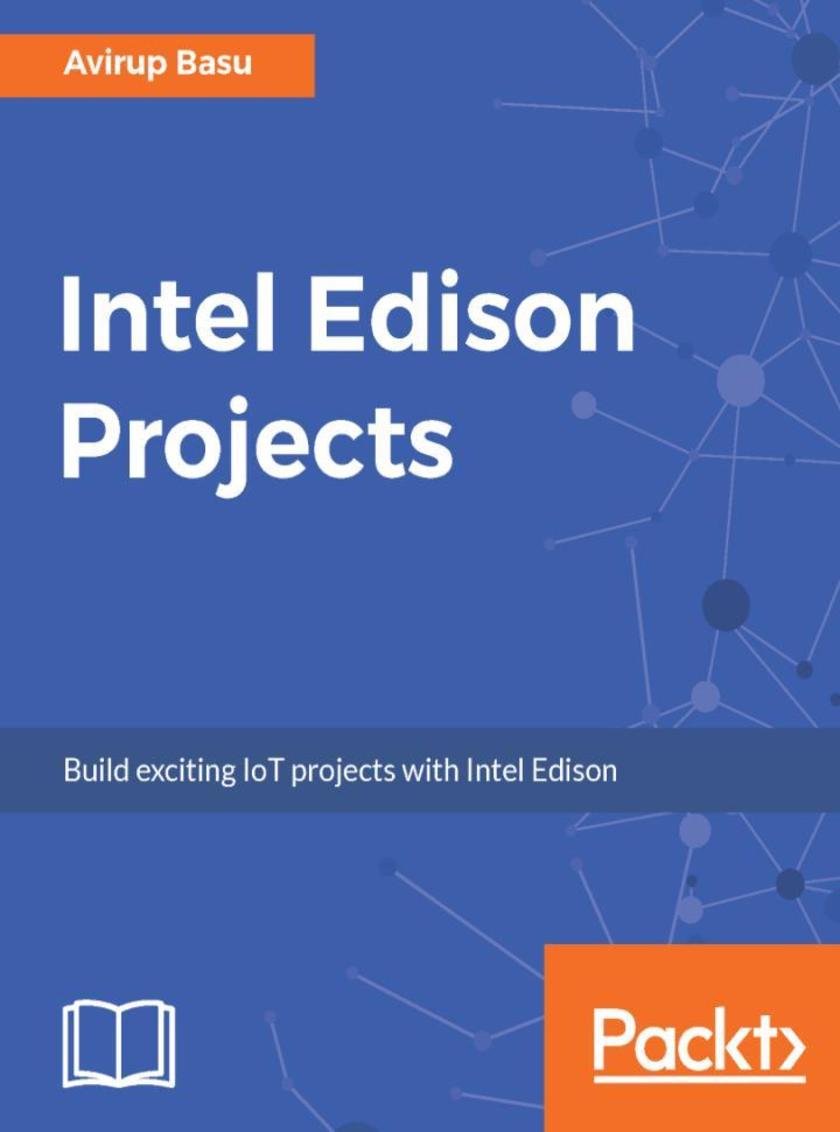
Intel Edison Projects
¥63.21
Build powerful Robots and IoT solutions using Intel Edison About This Book ? Learn to build advanced level robots with Intel Edison and Arduino ? Efficiently build and program home automation and IoT projects with Intel Edison ? Master the skills of creating enticing projects with Intel Edison. Who This Book Is For If you are a hobbyist, robot engineer, IoT enthusiast, programmer, or developer who wants to create autonomous projects with Intel Edison, then this book is for you. Prior programming knowledge would be beneficial. What You Will Learn ? Program your device using the Arduino processor language, Python, and Node.js ? Interface different sensors with the Intel Edison ? Build a home automation system using MQTT, Android, and WPF ? Perform face detection using Intel Edison ? Develop a high-speed line follower robot ? Control a robot using a PC application and an custom controller In Detail Change the way you look at embedded electronics with Intel Edison. It is a small computing platform packed with a set of robust features to deliver hands-on performance, durability, and software support. This book is a perfect place to kickstart development and rapid prototyping using Intel Edison. It will start by introducing readers to the Intel Edison board and explaining how to get started with it. You will learn how to build a mini weather station, which will help you to acquire temperature and smoke level and push it to the IoT platform. Then you will see how to build a home automation device and control your appliances using an Android app. Furthermore, we will build a security system using a webcam to detect faces and perform voice recognition. Toward the end, the book will demonstrate how you can build two robots, which will be based on different line sensing sensors and can be controlled by a PC. The book will guide the readers through each and every step of execution of a project, using Intel Edison. Style and approach A project-based guide that will take the readers through various domains of projects like robotics, IoT and so on.
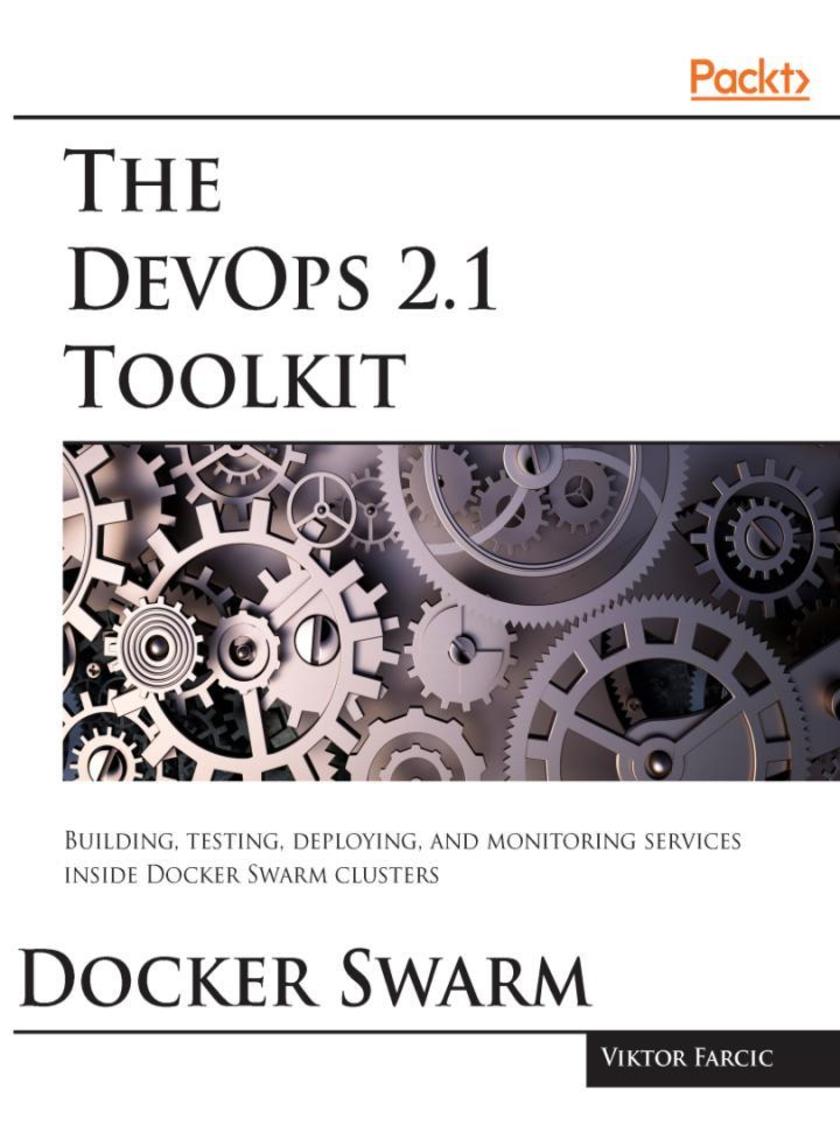
The DevOps 2.1 Toolkit: Docker Swarm
¥90.46
Viktor Farcic's latest book, The DevOps 2.1 Toolkit: Docker Swarm, shows you how to successfully integrate Docker Swarm into your DevOps toolset. About This Book ? Expand your DevOps Toolkit with the DevOps thought leader, Viktor Farcic ? Build, test, deploy, and monitor services inside Docker Swarm clusters ? Translate your understanding to different hosting providers like AWS, Azure, and DigitalOcean ? Go beyond simple deployment to explore how to create a continuous deployment process ? Extend the deep understanding you gained from Viktor's DevOps 2.0 Toolkit book Who This Book Is For This book is for professionals interested in the full microservices life cycle combined with continuous deployment and containers. Target audience could be architects who want to know how to design their systems around microservices. It could be DevOps wanting to know how to apply modern configuration management practices and continuously deploy applications packed in containers. It is for developers who would like to take the process back into their hands as well as for managers who would like to gain a better understanding of the process used to deliver software from the beginning to the end. This book is for everyone wanting to know more about the software development life cycle starting from requirements and design, through the development and testing all the way until deployment and post-deployment phases. We'll create the processes taking into account the best practices developed by and for some of the biggest companies. What You Will Learn ? Learn all aspects of Docker Swarm from building, testing, deploying, and monitoring services inside Docker Swarm clusters, available since Docker 1.12. ? Master the deeper logic of DevOps with Viktor, so that you can successfully apply that logic across any specific set of tools you’re working with. ? Translate a deep understanding to different hosting providers like AWS, Azure, DigitalOcean, among others. ? You’ll go beyond simple deployment: you will explore with Viktor how to create a continuous deployment process. Accomplish zero-downtime deployments, and what to do in case of a failover. ? Know how to run services at scale, how to monitor the systems, and how to make it heal itself. In Detail Viktor Farcic's latest book, The DevOps 2.1 Toolkit: Docker Swarm, takes you deeper into one of the major subjects of his international best seller, The DevOps 2.0 Toolkit, and shows you how to successfully integrate Docker Swarm into your DevOps toolset. Viktor shares with you his expert knowledge in all aspects of building, testing, deploying, and monitoring services inside Docker Swarm clusters. You'll go through all the tools required for running a cluster. You'll travel through the whole process with clusters running locally on a laptop. Once you're confident with that outcome, Viktor shows you how to translate your experience to different hosting providers like AWS, Azure, and DigitalOcean. Viktor has updated his DevOps 2.0 framework in this book to use the latest and greatest features and techniques introduced in Docker. We'll go through many practices and even more tools. While there will be a lot of theory, this is a hands-on book. You won't be able to complete it by reading it on the metro on your way to work. You'll have to read this book while in front of the computer and get your hands dirty. Style and approach We'll go through many practices and even more tools. While there will be a lot of theory, this is a hands-on book. You'll have to read this book while in front of the computer and get your hands dirty. The goal is not to master one particular set of tools, but to learn the logic behind them so that you can apply it to your job in various contexts.
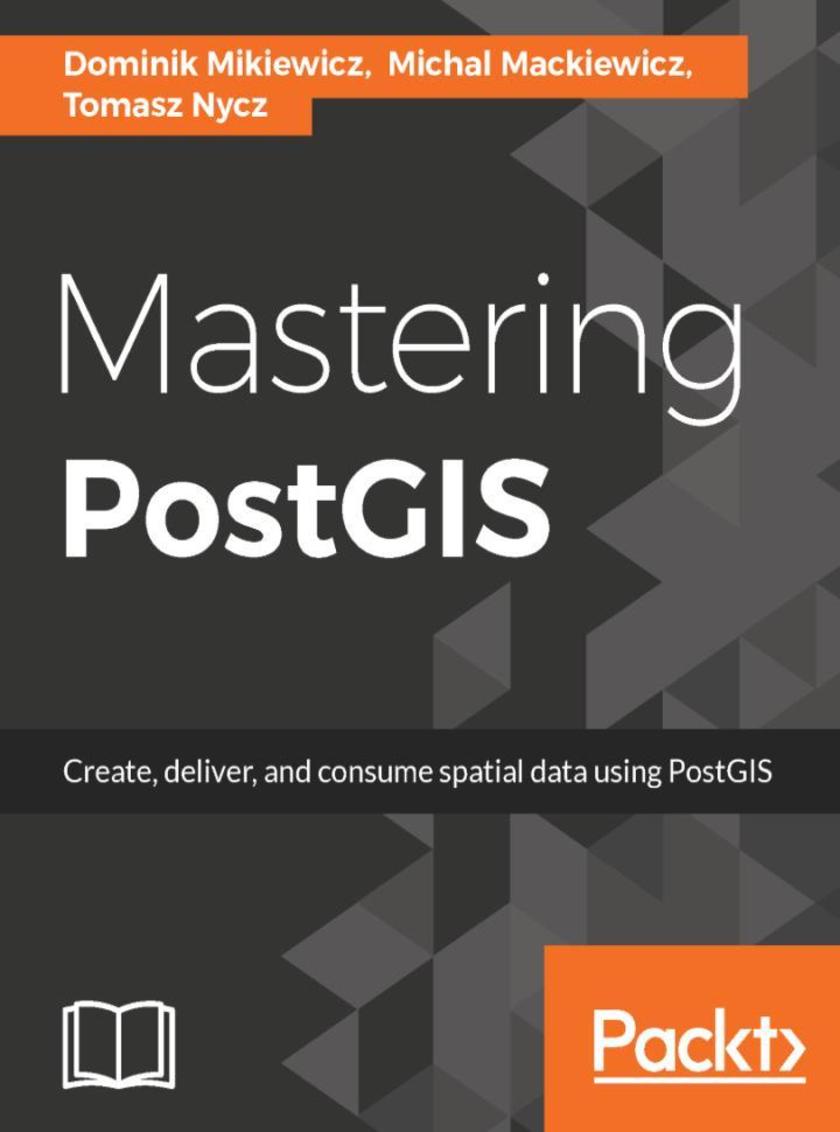
Mastering PostGIS
¥62.12
Write efficient GIS applications using PostGIS - from data creation to data consumption About This Book ? Learn how you can use PostGIS for spatial data analysis and manipulation ? Optimize your queries and build custom functionalities for your GIS application ? A comprehensive guide with hands-on examples to help you master PostGIS with ease Who This Book Is For If you are a GIS developer or analyst who wants to master PostGIS to build efficient, scalable GIS applications, this book is for you. If you want to conduct advanced analysis of spatial data, this book will also help you. The book assumes that you have a working installation of PostGIS in place, and have working experience with PostgreSQL. What You Will Learn ? Refresh your knowledge of the PostGIS concepts and spatial databases ? Solve spatial problems with the use of SQL in real-world scenarios ? Practical walkthroughs of application development examples using Postgis, GeoServer and OpenLayers. ? Extract, transform and load your spatial data ? Expose data directly or through web services. ? Consume your data in both desktop and web clients In Detail PostGIS is open source extension onf PostgreSQL object-relational database system that allows GIS objects to be stored and allows querying for information and location services. The aim of this book is to help you master the functionalities offered by PostGIS- from data creation, analysis and output, to ETL and live edits. The book begins with an overview of the key concepts related to spatial database systems and how it applies to Spatial RMDS. You will learn to load different formats into your Postgres instance, investigate the spatial nature of your raster data, and finally export it using built-in functionalities or 3th party tools for backup or representational purposes. Through the course of this book, you will be presented with many examples on how to interact with the database using JavaScript and Node.js. Sample web-based applications interacting with backend PostGIS will also be presented throughout the book, so you can get comfortable with the modern ways of consuming and modifying your spatial data. Style and approach This book is a comprehensive guide covering all the concepts you need to master PostGIS. Packed with hands-on examples, tips and tricks, even the most advanced concepts are explained in a very easy-to-follow manner. Every chapter in the book does not only focus on how each task is performed, but also why.




 购物车
购物车 个人中心
个人中心



